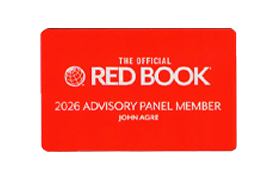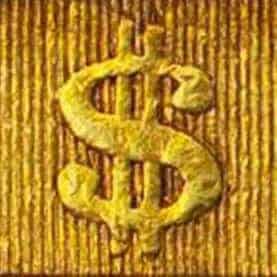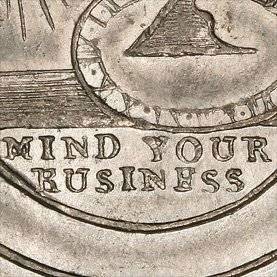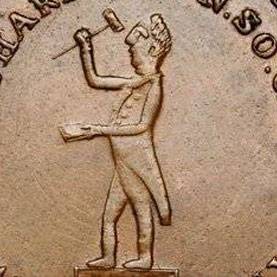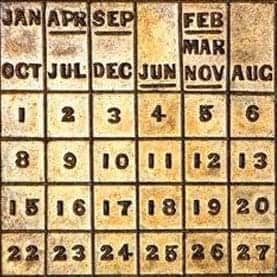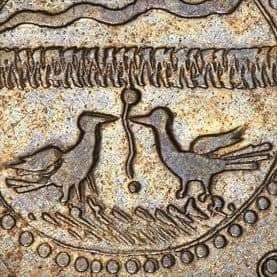March 5, 2009: So you’re going to a coin show, eh?

Some time ago a client of ours recommended that we write a Coin Commentary for collectors attending a first show. So we did (though we’ve tried to make it relevant for more experienced collectors too):
Planning:
Remember that old gag were someone writes the phrase ‘Plan Ahead’, but doesn’t leave enough room and ends up cramming the last few letters into the margin? Don’t do that.
Instead, start by printing out the schedule for the show you plan to attend, and making sure you know exactly where it is being held, and when it is open. Pay particular attention to the hours the show is open to the public, including any special early entry hours (which some shows offer for a relatively high fee of $50 or $100 or so). We can’t tell you how many times we’ve seen collectors show up on the wrong day, or wrong time, and then end up either sitting in the lobby impatiently waiting for the doors to open to non-dealers, or arrive a day later than everyone else. And you don’t want to be one of those guys.
Equally, it is in your interest to attend any show close as close to the beginning as you can. Some (but not all) of the good coins and good deals will likely sell quickly, and many dealers will leave before the show ends (an unfortunate reality of this business). So get there early for the best selection.
Walking the Bourse Floor:
Once you’ve arrived (at the correct time!) the first thing we’d recommend is that you pick up a copy of the show directory, usually available right at the door, which includes a list of all the dealers present, their table #s, and a handy map of the floor.
It’s worth the effort to figure out where all of your ‘target’ dealers are and mark them on the map, and then think about an efficient way to canvas the floor and see everything you want to see, including any interesting exhibits or displays.
If you want to view everything (and you’ve got the time), we’d suggest to do so in sequence (starting at the first table, or on the left, or at the back, for example) and then progressing through the room. It’s very easy to get sidetracked or to skip around, which is all fine too, though you are more likely to inadvertently skip some dealers that way.
When you are at a table, take a look at the inventory in its entirety. Do they have some 3rd world holders mixed in with their PCGS and NGC slabs? Do you see a lot of questionable coins? Sometimes (but not always) you can judge a coin by the company that it keeps. At the very least you can get a good sense of the dealer’s approach to the business and the kinds of coins they handle.
Having said that, you’d be amazed at what we and others have found in the most unlikely places, including at the the most recent show we attended a few weeks ago. Which is why we look at everything, everywhere (or as much as we possibly can in the time that we have).
See Something you Like?
If you do, ask the dealer for a closer look – but keep a few things in mind:
If the coin is raw, handle it very carefully, only by it’s edge (unlike the guy who came to our table at the ANA last year and picked up a raw coin like a potato chip). If it’s slabbed, you should still handle it as you would want a coin of your own treated. Don’t drop it, toss or flip it around (even if you see some dealers doing exactly that – and you very well might!).
When viewing any coin, raw or slabbed, keep it on the table in plain view of the dealer. A few coins are stolen at most every show, and dealers are understandably careful in this regard.
If you finish examining a coin and decide you do not want it, make sure you hand it back to the dealer and that he acknowledges receiving it (as opposed to just leaving it on the case).
If you like a coin but want to walk around the floor and ponder it before returning to the table, do not assume it will be waiting for you when you get back. If it’s something very nice and priced right, it most likely will sell to someone before too long.
But if you do take that chance, make sure you at least write down the coin and the dealer’s name and table number. You might think you’ll remember where it is, but at a large show you often won’t (and you might waste a really long time trying to find it again).
To avoid all that, you can also ask the dealer to hold it for you. Remember, though, the dealer is there to buy and sell coins, and tying up a coin during a show with a lot of other potential customers present is not ideal for them. Most dealers will accommodate an interested collector, though, by holding a coin for an hour or so, but this is something we’d recommend only if you are very serious about an item, and you and the dealer have already agreed on a price.
Negotiating:
Sometimes dealer prices are in plain view, sometimes they aren’t, but in every case they should quote you their asking price.
At which point, you may wish to negotiate.
Some collectors may make counter-offers, which is fine – though it’s best to be realistic. If a dealer quotes a price of $500, an offer of $100 isn’t likely to be accepted (or to lead to further productive discussions with that dealer).
Simply asking ‘what is your best price on this item?’ is often the most successful approach.
And know in advance that in some cases, and on particularly rare, unusual or desirable items, the best price might be the one you are quoted the first time.
Payment:
Most dealers take checks, though you will need to provide references if this is your first transaction (or an especially large one) with that dealer. Some dealers may take credit cards or PayPal payments as well, but it’s not typical. And cash will often work, though if the amount is too large some dealers will prefer other forms of payment.
Selling Coins:
Many dealers like to buy coins from show attendees, so by all means bring coins to sell.
But do your homework beforehand. In this day and age, with auction prices realized for all of the major coin companies available on the internet, for free, there is no excuse for not at least coming up with an approximate value for any coin. And whatever coins you bring, you should know how much you want for them.
The dealers likely to be most interested in your items are the ones who are offering the kind of coins you are selling. So if you see a dealer with a case filled with Polish Currency, he may not be the most likely buyer of your Capped Bust Half Dime die variety set (this may seem obvious, but it does not prevent people from offering us all sorts of bizarro stuff that we know nothing about at nearly every show. Jewelry made of ancient gold coins, anyone?).
Note that many dealers are going to want you to price your coins to him, though some will make you an offer.
But if you do get an offer, don’t expect it to be good after you leave that dealer’s table. No dealer wants to offer $5,650 for a coin, only to then see the owner walk around the floor, use that information and try to see if they can find someone – anyone – to pay $5 more (which is why some dealers are reluctant to make offers in the first place).
At the very least, trying to sell coins at a show will be a learning experience. You’ll find out who pays fairly, who makes two-way markets in their coins, and who treats you like dirt and belittles your coins (and there will probably be someone who does). So don’t let it get to you.
And don’t be surprised if there is a big disconnect between what some dealers say in their ads (e.g. “We are the highest buyers!” or “Immediate Cash Offers!”, etc.) and their actions on the bourse floor.
Trading:
Offering your numismatic items in trade or partial trade for a dealer’s coin is fine, provided that you inform the dealer in advance that that is your intent.
Also (as in selling coins), you are most likely to be successful trading coins of the same type that the dealer normally handles.
Even so, a dealer may or may not be interested in your items, or your items at this particular time, or at your requested price.
Remember, no one has an obligation to do a trade with you, and it is best to understand that going in. But, anything is possible provided that two parties have a meeting of the minds. If they don’t, there is no harm done.
Show Grading:
The major grading services set up at all of the national shows, and take submissions to be graded on site, or back at their offices.
But note that submission periods typically begin before the show is open to the public (to accommodate the large dealer submitters) and end before the show closes. So if you have coins to submit, do not wait until the end of the show, and do check with the services to find out when the submission cut-offs are.
It does vary from show to show depending on the volume of grading (and there are always disappointed collectors who bring coins for grading, but get there after the services have stopped taking them).
Basic Bourse Etiquette:
While a coin show is an entertaining event for collectors, keep in mind that it is a place of business for dealers who depend on sales and purchases to make a living.
Shows can also be pretty busy and quite hectic (OK, not always, but sometimes), from the first hours setting up, to buying and selling, viewing auction lots, seeing what is available on the floor, etc. So if a dealer is busy getting ready to go to an auction, it might not be the best time to show him your entire collection of Middle Date Large Cents by Newcomb variety.
Discussing coins and the market is fun, and many dealers enjoy it as well, but be conscious of monopolizing a dealer’s time and/or occupying a seat at his table for an excessively long time, especially if other customers are waiting or if there are transactions taking place.
When you visit a table, do not put your auction catalogs, coin box, brief case, etc. on the dealer’s cases so that no one else can see the coins on display.
If someone is in the middle of a transaction, it’s best not to interrupt, though it is perfectly appropriate to politely ask either another customer or a dealer to move a box or price guide which is blocking the case so you can see what’s underneath.
It is not appropriate to try to figure out what coins are in a box currently under discussion, to see what another collector is offering a dealer, or otherwise pry into someone else’s business.
Also note that show attendees are generally not permitted to buy from and sell to other show attendees on the bourse floor. If you want to conduct business, you’ll need to pay for a table, or move outside the bourse. Some show organizers will have offenders removed from the bourse floor.
Attire:
You’ll see people on the bourse floor in everything from well-tailored suits (and sometimes wearing extremely pointy shoes which are apparently considered very stylish these days) to guys in tank tops and bathing suits (in fairness, it was just one guy).
You should feel free to wear whatever you like (provided that it fits in between these two extremes), though we would make one very strong recommendation: Wear comfortable shoes. The floors of most coin show venues are typically constructed of what podiatrists call an ‘extremely hard concrete’ which does not feel good after standing or walking on it for several hours.
Hauling your Gear:
You’ll probably need auction catalogs, reference material, any coins you are bringing to the show, a pen, note paper, your loupe, etc.
Still, we’d advocate traveling as light as possible. Auction catalogs are heavy, and so if you are carrying a bunch of those, and some coins, and whatever other reference material you need, you may find that your bag soon weighs just over 350 pounds. Some people use wheelie bags to solve this problem (though I’ve always felt this makes you look like a flight attendant – not that there is anything wrong with that). Backpacks work too.
Occasionally we are asked by collectors if they can store a bag, or a jacket, or both behind our table while they walk the bourse floor, which we (and some other dealers) try to accommodate when we can, though our own space is limited, and at some well-attended shows it can start to look like a luggage store back there. In which case we have to say no mas. So it’s probably best not to assume you’ll be able to stash your belongings while you walk around.
Food:
If you have any desire to eat something healthy while on the bourse floor, do not assume that you will be able to buy it on the premises. Many coin shows don’t offer much more than hot dogs, chips and those enormous soft pretzels (with massive salt flakes on them normally used to melt ice on the Mass Pike), and so if you want a piece of fruit or something, you might want to bring it with you.
Connected Coin Auctions:
Many shows have auctions before, during or after the actual bourse. Sometimes lot viewing and the auctions themselves are held in the same facility as the show, sometimes at a nearby hotel, sometimes both. So if you are planning to attend an auction, read the catalogs carefully or visit the auction house’s website to make sure you know where and when it will take place.
Also, pay careful attention to the auction schedule for the various coin series and types, so you know when specific lots of interest will be sold. It is very easy to miss a lot you intend to bid on, like the dealer who arrived on Thursday evening for the Thursday afternoon session at one of last year’s Long Beach shows. That didn’t work out so well (except for the other bidders).
And while the auction itself is a great chance to buy, lot viewing is an unparalleled opportunity to view hundreds of coins in a single sitting, and to compare multiple examples of like-graded pieces. If you do this enough, you’ll develop a very good sense of the range of quality in the marketplace and will hone your ability to separate the wheat from the chaff. And that’s a useful skill to have.
Another advantage of attending an auction in person is the opportunity it affords to find some hidden jewels. Sometimes good coins are mixed in with the obscure and inexpensive items in the budget sessions, or hidden in group lots. So if you have the time, you might want to pore through those lots and try to find things that the ‘regular’ mail and internet bidders might miss. Trust us, sometimes this can really, really pay off.
Security:
If you are bringing coins with you security should be a consideration. You don’t need to obsess about it, but you should take sensible precautions.
While traveling to and from the venue, don’t broadcast the fact that you are on your way to a coin show, don’t flash coins around, don’t walk around with a blue PCGS box in your hands (lots of people recognize these boxes), etc.
If you fly, be aware that bringing coins through airport security may subject you to additional screening. If so, you can request it be done in a private room (which we highly recommend so that not everyone else in LaGuardia knows you’ve got a bunch of high grade Saints on you).
When you are on plane (or a train or other public transit), be discreet. There is no privacy in that confined space, and you don’t want to attract the attention of people who might want to take what you have.
While you’re at the show, keep track of your belongings. Don’t set your briefcase unattended on the floor while looking at coins or otherwise assume that everyone in the room is as honest as you are.
Note also (and this is important) if you ask a dealer to store your bag behind their table, they don’t automatically assume liability for it. So in the unlikely event that something goes missing while your stuff was stored, don’t blame the dealer. His or her eyes are focused on making sure his own stuff stays where it belongs.
Finally, remember that while you can be anonymous when you are on your way to a show, it’s a lot harder when you leave. So always take off your show ID as soon as you exit the bourse floor, and be aware of your surroundings as you make your way home. If you can travel with someone else, all the better.
And, in conclusion:
A coin show should be fun – a great place to meet like-minded collectors, see a wide variety of coins, hone your grading skills, learn a lot, etc.
But there is one pitfall that is best to avoid: Some people come to a show with a certain amount of money to spend, and then after traveling to the show, and walking around for hours, they feel like they’ve gone to all this trouble so they have to spend it on something (anything!) before they leave.
And if that’s your mindset, there’s a pretty decent chance that you’ll end up buying something that you really don’t want, or need, and you’ll later regret it. Trust us, we know.
Which is how we developed the CRO ‘Coin Show Mantra’:
It’s OK not to buy something.
Seriously. If you see something you really want, and the price is right, then by all means go ahead and get it. But if nothing really moves you, it’s OK not to buy something.
And that’s all we really have to say about that.

